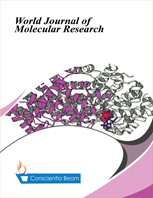Thermal Activationprocess in Hydrogen Bonds
DOI:
https://doi.org/10.18488/journal.505/2016.1.1/505.1.14.26Abstract
We study the Markovian process on parameterized approximate nonlinear one-dimensional double Morse potentials, used to describe the collective proton dynamics in one dimensional network of hydrogen bonds. Using Kramer’s method, the first and second moment of the proton’s dynamic is evaluated respectively in the case of over damping, intermediate damping and very low damping limit. We found out that in the case of an over damping limit and intermediate damping, the dynamics of the proton decrease when the curvature parameter increases. In the case of very low damping limit, the motion of the proton in the well became independent on the curvature parameter.
Keywords:
Brownian motion, Markovian process,Kramer’s theory, Over damping limit, Intermediate damping limit, Very low damping limit, Double Morse potentials, Hydrogen bondsAbstract Video
Published
2016-08-03
How to Cite
Fai, L., Kuetche, J. N., Fouokeng, G., Tchoffo, M., & Ngwa, E. (2016). Thermal Activationprocess in Hydrogen Bonds. World Journal of Molecular Research, 1(1), 14–26. https://doi.org/10.18488/journal.505/2016.1.1/505.1.14.26
Issue
Section
Articles

